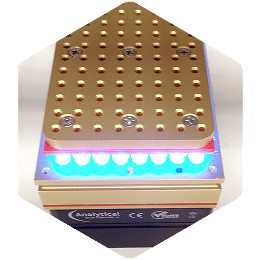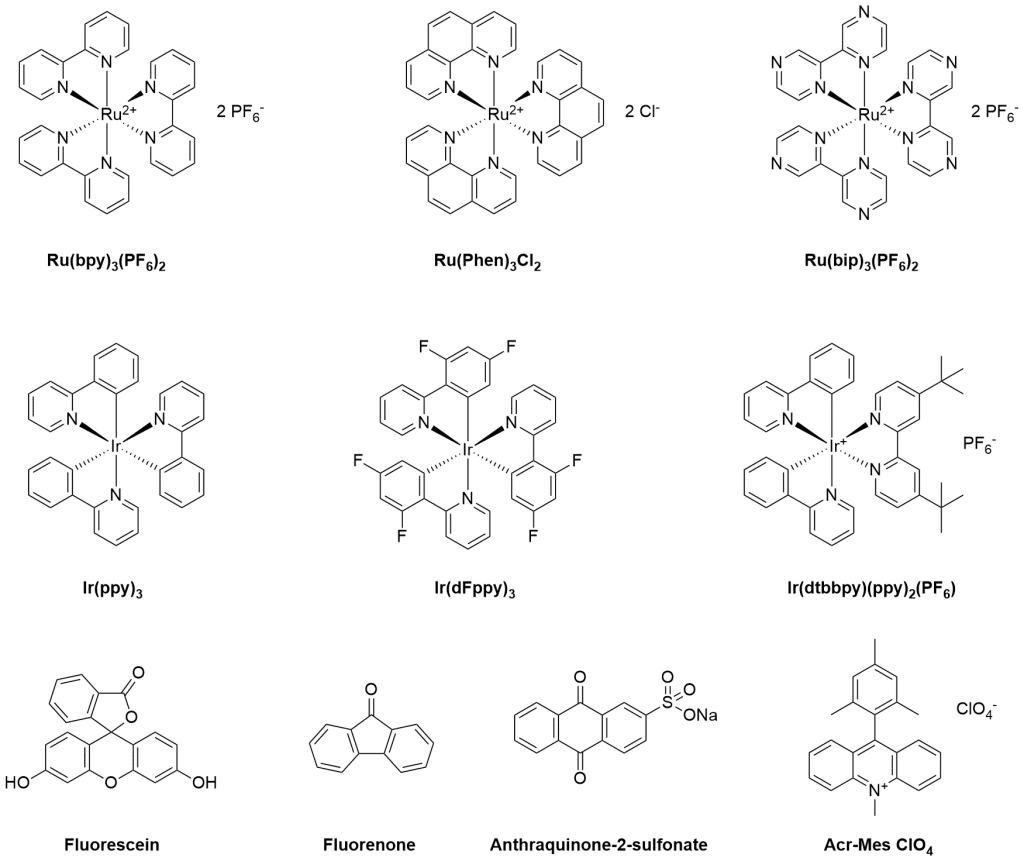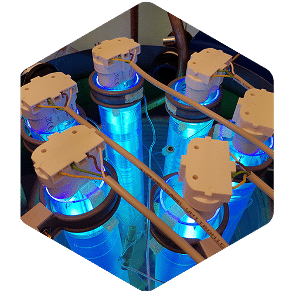The utilization of ultraviolet (UV) or visible light in chemical reactions is a well-established and highly regarded approach in the field of chemistry. It is known for its green attributes, making it a cornerstone of sustainable technology and environmentally friendly practices. Recent advancements in LED (light-emitting diode) lighting technology and the development of novel photoredox catalysts have opened up new frontiers in the application of visible light, enabling a wide range of chemical reactions that were previously considered “forbidden” or challenging to achieve. Photochemistry has a number of key advantages listed below.
Sustainable Chemistry: Light as a reagent aligns with green and sustainable chemistry principles, reducing reliance on hazardous traditional reagents and minimizing hazardous reagent use.
Photoredox Catalysts: Novel photoredox catalysts enhance the scope of photochemical reactions and allow the use of visible light.
Overcoming ‘Forbidden’ Reactions: Previously impractical reactions have become accessible, bypassing high energy barriers through visible light-driven photochemistry.
Selectivity and Precision: Photochemical reactions offer high selectivity, enabling accurate control of specific chemical bonds.
At Symeres, our expertise in the realm of photochemistry extends back for more than two decades , initially starting with UV-induced isomerization of vitamin D and its related derivatives. Over the years, we have refined and expanded our capabilities within the photochemistry arena, resulting in a comprehensive suite of service that enable us to deliver solution for our clients’ diverse chemical challenges.
Our services within the domain of photochemistry encompass a broad spectrum of capabilities and applications, including:
- High-throughput library synthesis: Utilizing ,for example, [2+2] cycloadditions in a photoflow setup, access to hundreds of novel compounds with high sp3 character can be readily achieved. A wide range of bicyclic scaffolds has been synthesized at Symeres for our Symegold library using this method.

- Synthetis method development: Employing screening devices and a range of photocatalysts to identify the best conditions for specific new transformations, for example, metal-catalyzed C–N couplings and decarboxylative C–C and C–X bond formations.


- Process Scale-Up: Our experience extends beyond the laboratory scale, and we are adept at scaling up photochemical processes up to kg productions. Using setups derived from readily available lights (LED and UV-C), batch-type vessels, or continuous-flow hardware we keep engineering principles in mind for the highest possible photon efficiency. We can ensure seamless transition from small-scale proof of concept to large-scale manufacturing.

For the use of photochemistry at any stage of your drug development, Symeres is the partner of choice.
Want to get directly in contact with André de Vries, our Director of Innovation and Business Development, to talk about our capabilities in the field of Photochemistry? Contact us and one of our experts will get back to you as soon as possible.
